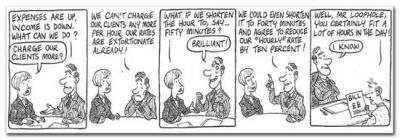I have a bill of costs which utilises various hourly rates for the “Grade C”, “Grade A” and “Costs Draftsman”. However, the bill fails to comply with Costs Practice Direction 4.5:
“The background information included in the bill of costs should set out:
(2) a statement of the status of the solicitor or solicitor’s employee in respect of whom costs are claimed and (if those costs are calculated on the basis of hourly rates) the hourly rates claimed for each such person.”
Therefore, at an early stage (July 2009), I requested details of the names, qualifications and PQE of each fee earner. The claimant’s “law costs specialists” subsequently gave the names of the various fees earners and indicated which of them they classified as Grade A or Grade C. Oddly, there was a total failure to deal with the question of qualifications or PQE.
The matter drags on and Points of Dispute are served in September which repeat the request for details of the qualifications and PQE of the fee earners.
Replies are served months out of time in December.
These Replies give the date of qualification of two of the fee earners (the Grade As) and state in relation to the other three fee earners that they “do not have the qualifications however all have the relevant experience to claim a Grade C Grade.”
Grade A and B fee earners are defined as follows:
A – Solicitors with over eight years post qualification experience including at least eight years litigation experience.
B – Solicitors and legal executives with over four years post qualification experience including at least four years litigation experience.
A Grade C fee earner is defined as: “Other solicitors and legal executives and fee earners of equivalent experience”.
The Guide to Summary Assessment of Costs (page 1494 of the White Book 2010) states: “Whether or not a fee earner has equivalent experience is ultimately a matter for the discretion of the court.”
More specifically, the Guide states:
“Unqualified clerks who are fee earners of equivalent experience may be entitled to similar rates and in this regard it should be borne in mind that Fellows of the Institute of Legal Executives generally spend two years in a solicitor’s office before passing their Part 1 general examinations, spend a further two years before passing the Part 2 specialist examinations and then complete a further two years in practice before being able to become Fellows. Fellows have therefore possess [sic] considerable practical experience and academic achievement. Clerks without the equivalent experience of legal executives will be treated as being in the bottom grade of fee earner ie. trainee solicitors and fee earners of equivalent experience [Grade D].”
So, a FILEX has six year’s experience and academic achievement under their belt. Those without this should be treated as Grade D. There may be arguments as to whether seven or eight year’s experience is sufficient to amount to Grade C status without having passed the exams required of a FILEX.
I advised my instructing solicitors to raise a formal Part 18 Request to drag a proper answer out of the other side.
The response that has just been received is that the experience of the unqualified fee earners is: six years, five years and two years respectively.
The first two fairly obviously aren’t the equivalent of a FILEX. Although the first has the equivalent experience, just, neither has undertaken the academic training. But what about the third?
Two years. Unqualified.
On what parallel legal costs world does that equate to the equivalent of a qualified solicitor or FILEX?
At what stage does wishful thinking concerning the rates that might be allowed move into outright fraud?

